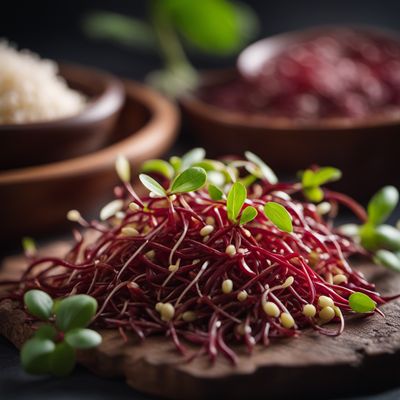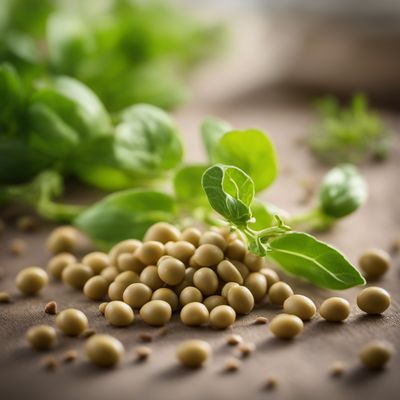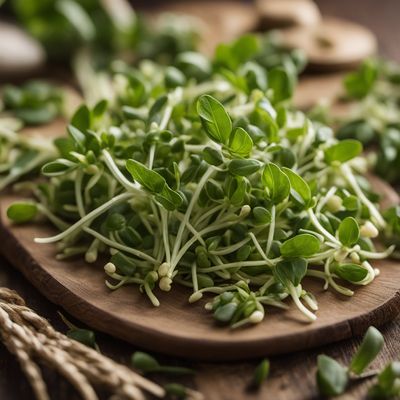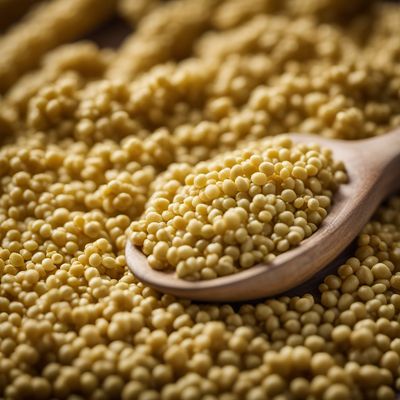
Ingredient
Barley sprouts
The Nutritional Powerhouse: Barley Sprouts Unveiled
Barley sprouts are young shoots that emerge from germinated barley seeds. They have a delicate and tender texture, with a mild grassy flavor that is slightly nutty. These sprouts are characterized by their vibrant green color and slender shape, adding visual appeal to any dish. They provide a satisfying crunch and a refreshing taste, making them a delightful addition to salads, sandwiches, and wraps.
Origins and history
Barley, the grain from which barley sprouts originate, has a rich history dating back thousands of years. It is believed to have originated in the Fertile Crescent of the Middle East and has been cultivated since ancient times. Barley sprouts have been used in traditional cuisines across various cultures, including Chinese, Korean, and Japanese, where they are commonly enjoyed in soups, stews, and stir-fries.
Nutritional information
Barley sprouts are a nutritional powerhouse, providing a rich source of vitamins A, C, and K, as well as essential minerals such as iron, magnesium, and potassium. They are also low in calories and high in dietary fiber, making them a great choice for weight management and digestive health.
Allergens
Barley sprouts may contain gluten, making them unsuitable for individuals with gluten intolerance or celiac disease.
How to select
When selecting barley sprouts, look for fresh, vibrant green sprouts with no signs of wilting or discoloration. Avoid sprouts that appear slimy or have a strong odor. Opt for organic or locally sourced sprouts whenever possible to ensure the highest quality and freshness.
Storage recommendations
To maintain the freshness of barley sprouts, store them in a sealed container or plastic bag in the refrigerator. They can stay fresh for up to a week, but it is best to consume them within a few days for optimal flavor and texture.
How to produce
To produce barley sprouts at home, soak barley seeds in water overnight. Drain the water and spread the seeds evenly on a tray or sprouting container. Rinse the seeds twice a day and keep them in a warm, dark place. Within 3-5 days, the sprouts will be ready for harvest.
Preparation tips
Before using barley sprouts, rinse them thoroughly under cold water to remove any dirt or debris. They can be enjoyed raw in salads, sandwiches, or wraps, or lightly sautéed for a few minutes to enhance their flavor. Add them to soups, stir-fries, or grain bowls for an extra nutritional boost. Avoid overcooking to preserve their crispness and nutritional value.
Culinary uses
Barley sprouts are commonly used in salads, sandwiches, wraps, soups, stews, and stir-fries. They add a refreshing crunch and a burst of nutrients to these dishes.
Availability
Barley sprouts are commonly available in grocery stores, health food stores, and farmers markets, especially in regions where barley is cultivated.
More ingredients from this category

Adzuki bean sprouts
Vibrant Sprouts of Asia

Mustard sprouts
The Zesty Green Delight

Radish sprouts
The Zesty Microgreens: Exploring the World of Radish Sprouts

Lentil sprouts
The Sprouting Powerhouse

Rice sprouts
The Nutritional Powerhouse: Rice Sprouts

Fenugreek sprouts
The Mighty Sprouts: Unleashing the Power of Fenugreek

Common bean sprouts
The Crunchy Delight: Exploring Common Bean Sprouts

Millet sprouts
The Nutritional Powerhouse: Millet Sprouts

Chickpea sprouts
The Nutrient-Packed Sprouts